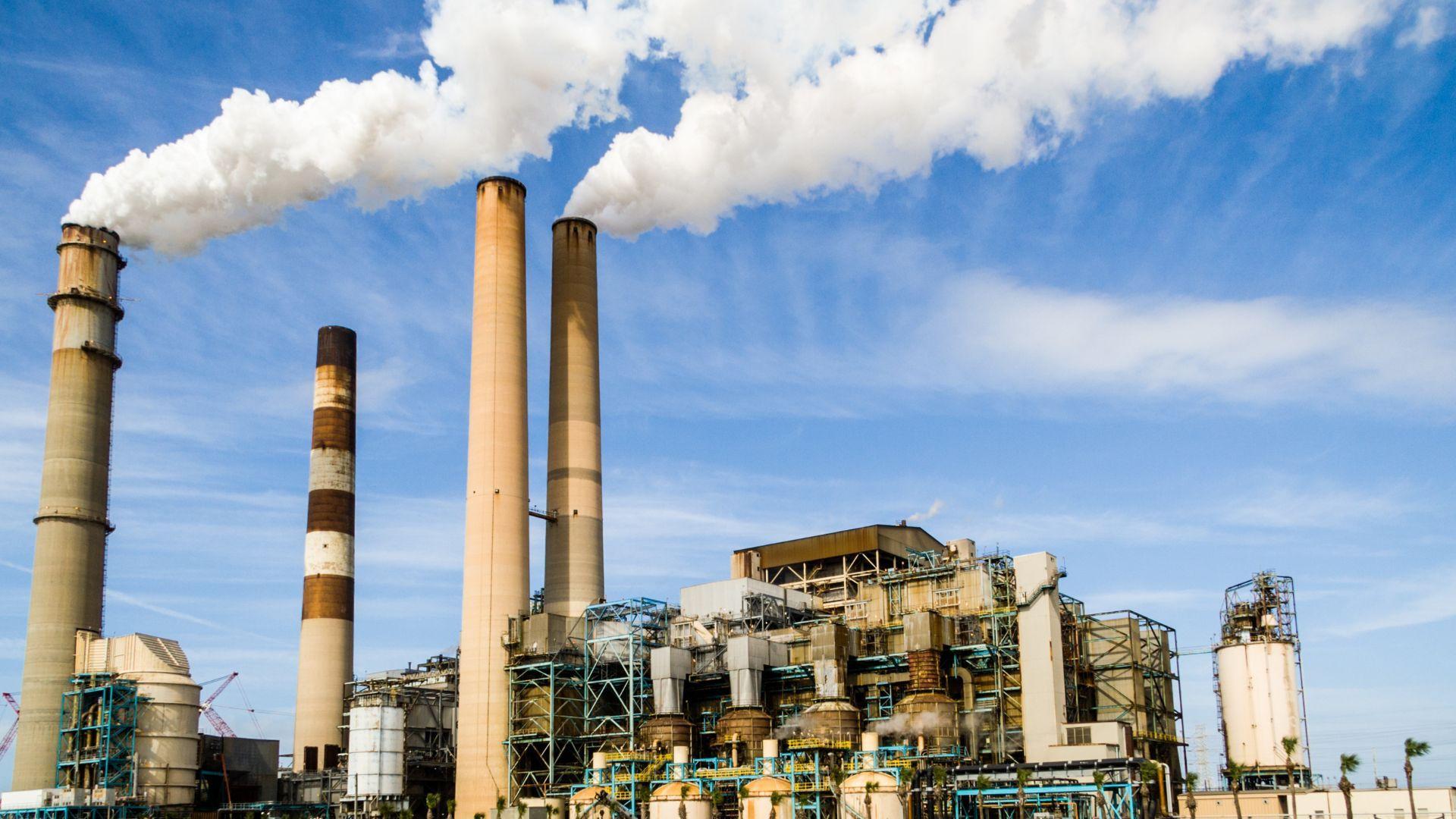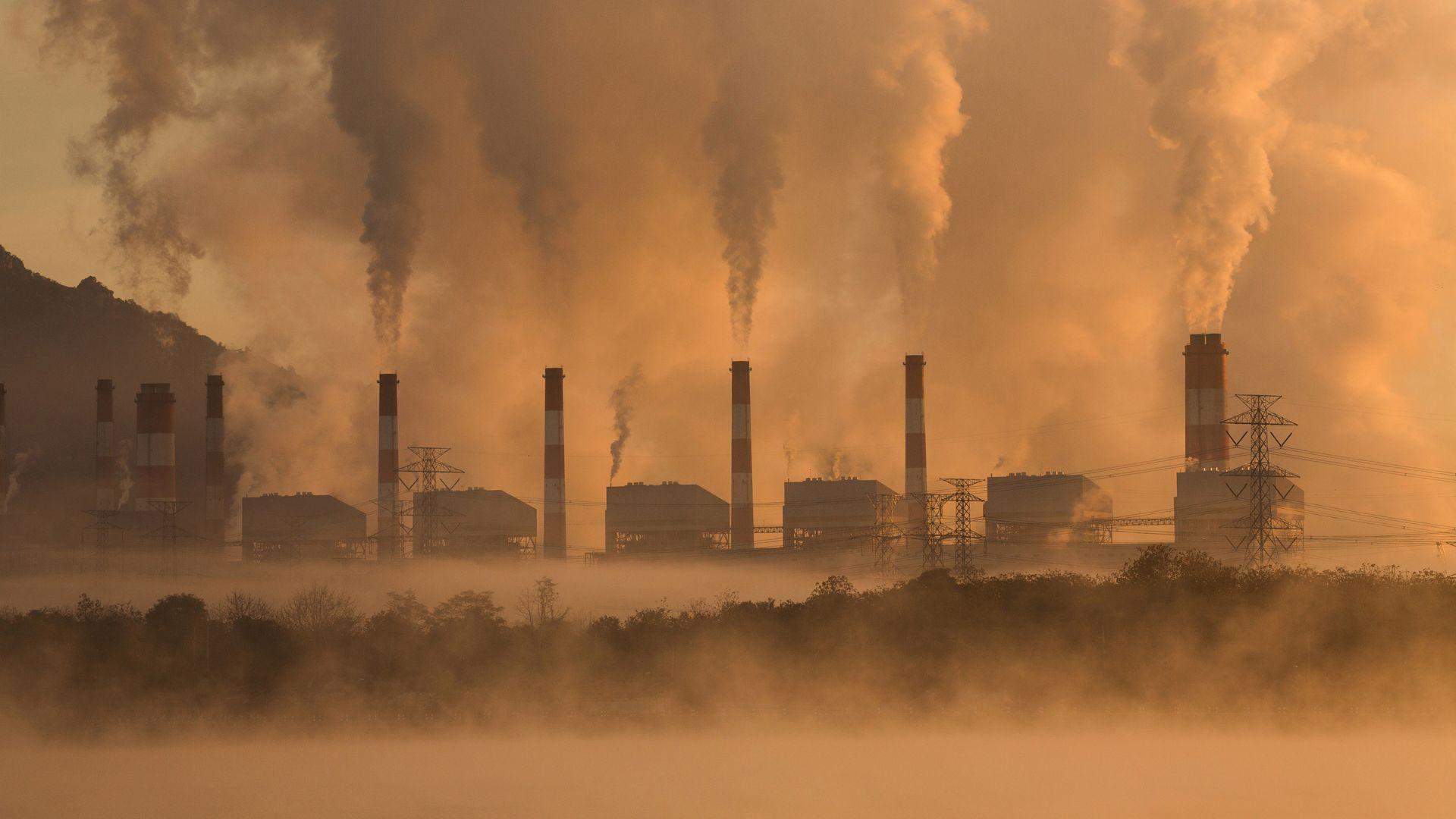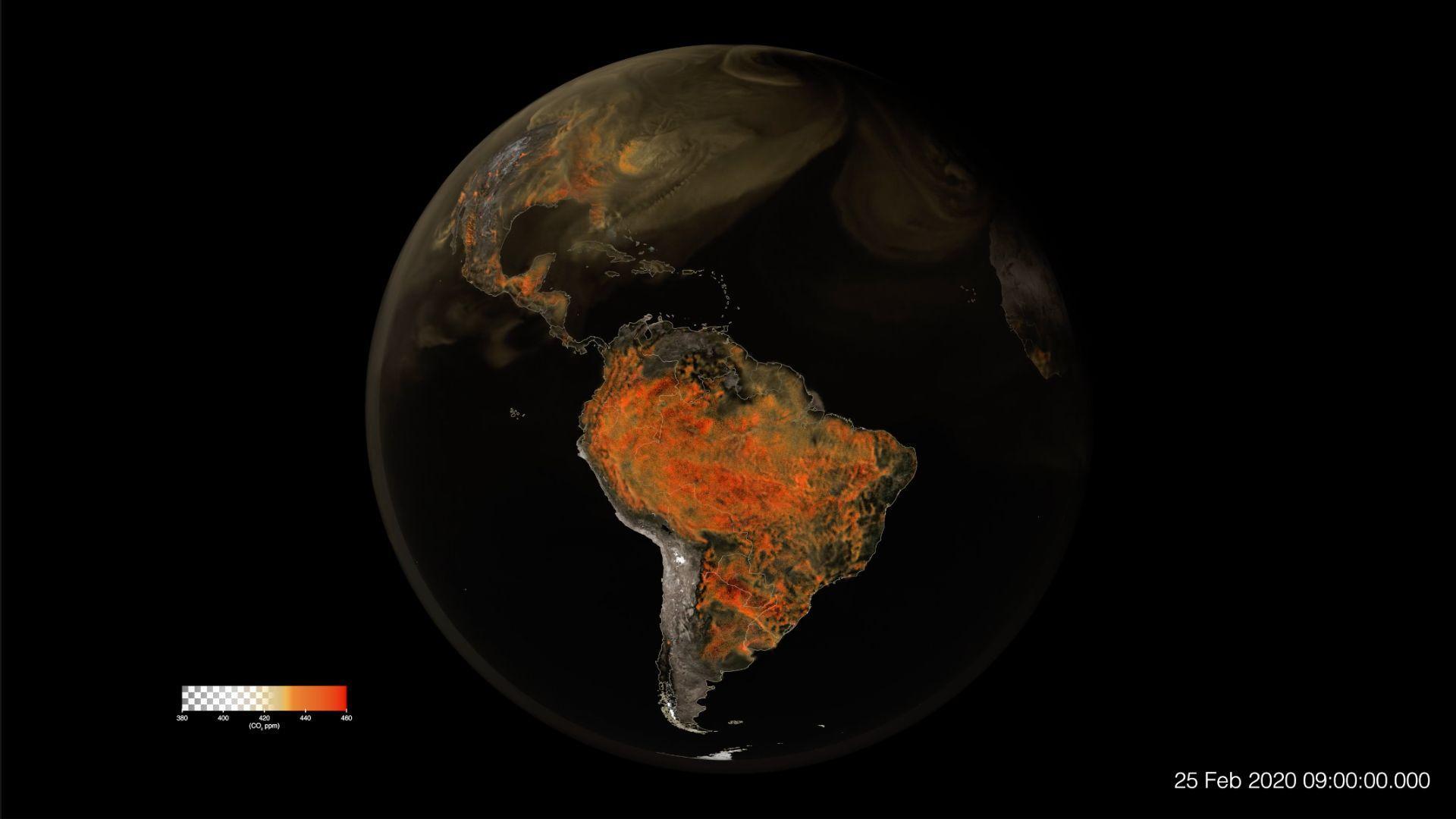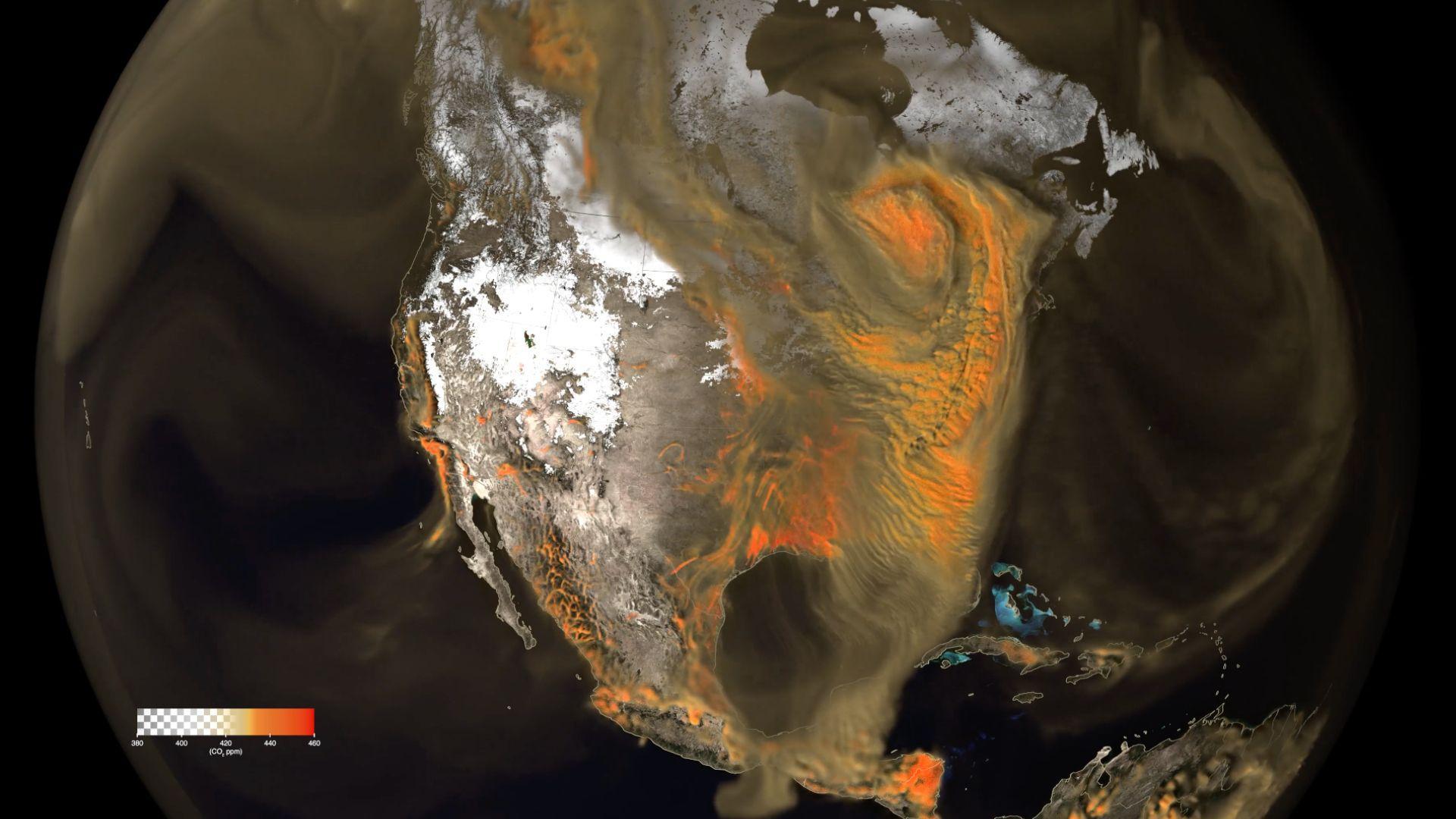A new video from NASA shows the concerning patterns of carbon dioxide moving around Earth’s atmosphere.
The model shows that CO2 is pouring out from major cities in the US and around the world. Then it blows around, swirling due to atmospheric currents. Will this model help scientists to combat the devastating effects of climate change?
The Goddard Earth Observing System Model

This visualization from NASA shows the CO2 patterns between January and March 2020. It was created using a model named the Goddard Earth Observing System (GEOS).
By using data from ground observations and satellite instruments including the Terra satellite’s MODIS and the Suomi-NPP satellite’s VIIRS, the GEOS uses computers to simulate the atmosphere.
Why Model CO2?

Lesley Ott, a climate scientist at NASA’s Goddard Space Flight Center in Greenbelt, Maryland, said, “As policymakers and as scientists, we’re trying to account for where carbon comes from and how that impacts the planet.”
Models like the GEOS can visualize gasses in the air, like CO2, and help scientists see where there is an abundance. Ott said that by using a model, “You see… how everything is interconnected by these different weather patterns.”
What Increases CO2 in the Atmosphere?

Many human activities increase the amount of CO2 and other fossil fuels in the atmosphere. Because of industrial processes, burning fossil fuels, and deforestation, the devastating amount of CO2 has increased dramatically within the last 250 years.
Since the Industrial Revolution, atmospheric CO2 levels have risen from about 280 parts per million (ppm) to over 400 ppm. According to the United States Environmental Protection Agency, the US released 6,343 million metric tons of carbon dioxide in 2022.
Major Centers of Fossil Fuel Burning

Major centers of fossil fuel burning—like cities and power stations across China, the United States, and South Asia—are prominent on the map. On the model, one can see the large amount of CO2 rising from these areas.
In South America and Africa, CO2 emissions into the atmosphere are mostly from fires. Between deforestation and controlled burns, plumes of CO2 can be seen with each passing day.
Obvious Plume Pulsing

Pulsing appears most obviously over forests. CO2 increases during the day and calms down during night hours. CO2-emitting fires usually die down during the night. Additionally, plants that absorb CO2 from the atmosphere only photosynthesize when there is daylight.
Ott explained, “We had a feeling we were going to see plume structures and things that we’ve never been able to see when we do these coarser resolution simulations… Just seeing how persistent the plumes were and the interaction of the plumes with weather systems, it was tremendous.”
CO2 is Present Everywhere

Although the model might look like there is CO2 clustered in some areas and missing in others, CO2 is actually everywhere. Simply, it is just in higher concentrations directly above areas where it is being emitted in large amounts.
AJ Christensen, a senior visualization designer at NASA’s Goddard Space Flight Center, explained, “We didn’t want people to get the impression that there was no carbon dioxide in these sparser regions… But we also wanted to really highlight the dense regions because that’s the interesting feature of the data. We were trying to show that there’s a lot of density over New York and Beijing.”
Greenhouse Gases and Climate Change

Greenhouse gasses—CO2, methane (CH4), nitrous oxide (N2O), water vapor, and others—absorb and re-radiate some of the sun’s infrared radiation back towards the Earth’s surface. The gasses trap heat in our atmosphere and warm the planet.
The increased warmth affects weather patterns. More extreme weather such as hurricanes, droughts, heatwaves, and heavy rainfall become common. Additionally, the increased warmth melts polar ice caps and glaciers, which contributes to rising sea levels.
Global Warming

The GEOS model shows the true extent of our CO2 emissions and the extent to which we are causing climate change.
2023 was the world-wide hottest year on record. According to the Intergovernmental Panel on Climate Change, humans have “unequivocally caused warming.”
The Purpose of Modeling

The GEOS model and other similar models will help scientists combat climate change. Ott explained, “What’s happening is you’re stitching together this very complex array of models to make use of the different satellite data, and that’s helping us fill in this broad puzzle of all the processes that control carbon dioxide.”
Ott continued, “The hope is that if we understand greenhouse gasses really well today, we’ll be able to build models that better predict them over the next decades or even centuries.” If scientists can better predict greenhouse gasses like CO2, we may be able to curb the effects of climate change before it is too late.

